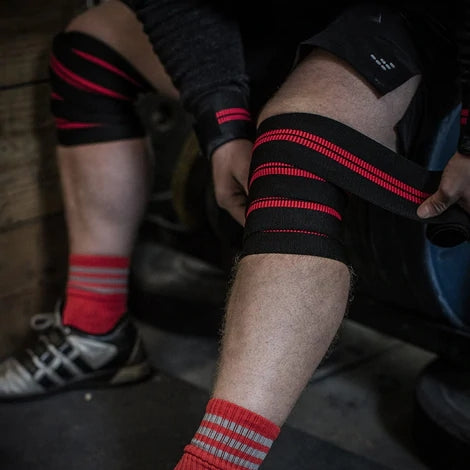
How to properly use knee pads when exercising
Share
Use knee pads sometimes inside the pants and sometimes outside. The advantage of putting it inside is that it has good stability and can play the role of "braking" to the greatest extent; the advantage of using it outside is that it is easy to wear and adjust, but the braking performance will be reduced. Generally speaking, when the environmental changes are not obvious and you do not need to adjust or take off the knee pads at any time, it is better to put them inside, otherwise it is better to put them outside. Whether it is knee pads or trekking poles, they only provide auxiliary protection. To protect the knees, the most fundamental thing is to exercise regularly, increase muscle strength, equip yourself with scientific and reasonable weights, and maintain reasonable movements during activities.
A knee pad is an item used to protect people's knees. It has the functions of sports protection, cold protection, and joint maintenance. It is divided into sports knee pads and health knee pads. Suitable for athletes, middle-aged and elderly people, and patients with knee diseases.
In modern sports, the use of knee pads is very extensive. The knee is not only an extremely important part in sports, but also a relatively fragile and easily injured part. It is also extremely painful and slow to recover when injured. Some people even experience dull pain on rainy and cloudy days.
In order to protect the knee from injury, a variety of knee pads are on the market, and we most commonly include two types: ordinary knee pads with straight sleeves and professional knee pads with reinforcing bars on both sides.
-
Knee pads are not required for general exercise.
-
If you are climbing, you need to use it intermittently, not the whole time.
-
Put it on when the knee feels uncomfortable, and take it off when the knee is in good condition, otherwise it will affect the normal training of the muscles.

In the choice of knee pads, there is no need for knee pads with particularly strong functions, because the more functional knee pads, the better the protection and support effect, the greater the range of affecting the exercise effect, and the long-term use will greatly reduce the effect of muscle training.
Wearing knee pads when exercising can indeed protect your joints, but you are jumping with knee pads. Could you please explain what it means? Do you have any misunderstandings about knee pads?
Knee pads, as the name suggests, means "protecting the knees". Of course, what I'm going to tell you today is neither the warm knee pads worn to keep out the cold in winter, nor the sports knee pads that ALICE pals wear to protect their knees when climbing mountains, but the fitness knee pads worn when exercising.
Since knee pads can protect the body, is it necessary to wear knee pads for all actions?
Of course not. For example, if you practice a bench press, lift a dumbbell, etc., it is impossible to cause knee damage, so you don't need to wear knee pads.
The knee is the connecting part between the upper and lower legs. The main internal structure is the meniscus and four ligaments. The simple structure causes the knee joint to be relatively weak.
Cartilage tissue, especially the meniscus, is extremely vulnerable to injury during exercise, especially heavy training such as squats or deadlifts. In the process of completing these movements, the knee joint is under great pressure, and if the protection of the protective gear is lacking, the body movements are easily deformed.
When the posture of the exercise is correct and the intensity is moderate, it can help you exercise the muscles of the lower limbs, but the wrong posture and excessive training, the local high pressure can easily cause joint discomfort, and even damage the cartilage tissue and cause inflammation.
Before buying knee pads, let's test our knee health:
Related Article: Common knee injuries and the role of knee braces
1. Can you squat and stand up easily?
Especially severe patients may not be able to squat down; some people can squat, but need support to get up when standing. These symptoms initially indicate that there is a certain problem with the knee joint.
2. When standing, the legs can be easily brought together.
3, legs together straight, sitting on the bed, the popliteal fossa can be close to the bed.
Of course we can't wait until the knee is broken to think about knee pads, so how should we choose knee pads?
1. Materials
When we choose knee pads, we must first look at what material it uses. Generally, high-quality ones are softer, not hard to touch, comfortable and elastic.
The thickness should also be enough. The first is that it can keep warm, especially after a lot of exercise, sweating is more, if the wind will induce joint pain; the second is to be able to stabilize the protection, wrapping pressure, and protect the knee.
2. Paste
Then there is the simple and convenient wearing, which mainly depends on where it is pasted. The large area of velcro increases the adjustment range. When the amount of exercise is large, it is not easy to cause the knee pad to not be in the same position as the joint, and it will fall off, and there is no need to worry about sweating too much to make it slip off.
3. Design
When choosing a knee pad, not only look at the appearance, but also pay attention to whether its design is reasonable. Depending on whether it fits the knee joint, fixed knee pads are prone to non-fit, so the free-wound type is more suitable for use.










